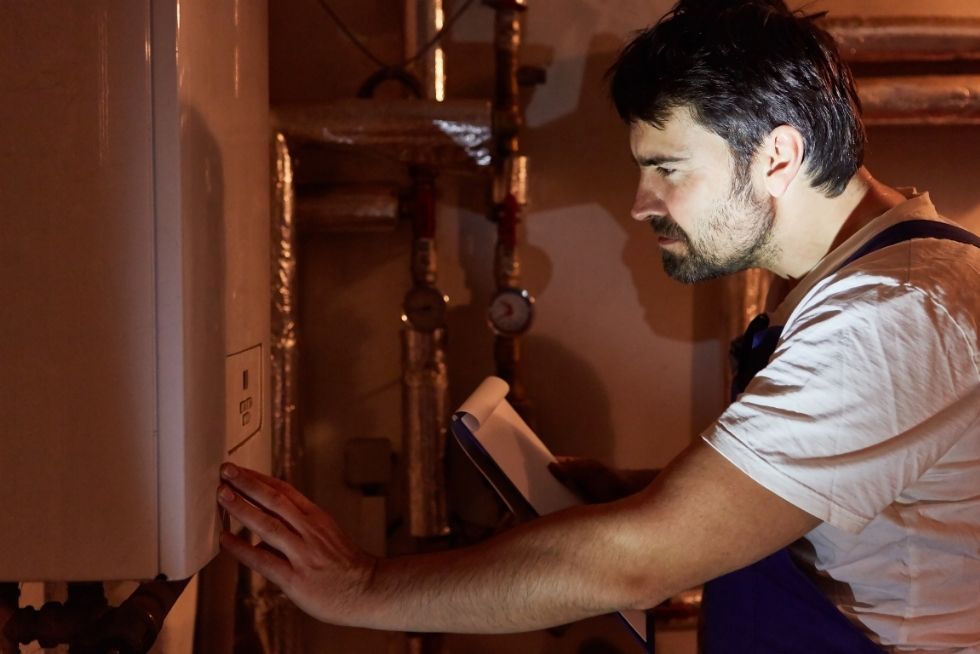“Will my heating survive the winter?”
“What if it breaks down on the coldest day of the year?”
These are the questions that keep you up at night when the temperature starts to drop.
No one wants to wake up to a freezing house or sky-high energy bills.
Here’s the truth: Heating systems don’t just stop working out of nowhere.
They give you signs—small issues that can be fixed before they become big, expensive problems.
The good news? You don’t need to be an HVAC expert to keep your system running smoothly.
This is your no-nonsense guide to making sure your heating is ready for whatever winter throws at it.
Why Heating Repair Before Winter is a Must
Picture this: It’s a frosty morning, and you hit the switch on your heating system.
Nothing happens.
Now you’re scrambling to find a technician.
You’re competing with everyone else who didn’t prepare.
And you’re likely paying double for an emergency call-out.
It’s not just about avoiding discomfort.
Heating issues can wreck your energy efficiency, drive up bills, and even create safety hazards if ignored.
Fixing problems early doesn’t just save money—it saves stress.
Step 1: Test the Thermostat
The thermostat is like your heating system’s brain. If it’s not working, nothing else will.
Switch it to “heat” and set the temperature higher than your room’s current temperature.
If warm air comes out, you’re off to a good start.
If it doesn’t, check the batteries. Sometimes, that’s all it takes.
If the batteries are fine, it could be a wiring issue or a faulty unit. That’s when you call for professional heating repair.
Step 2: Check Your Air Filters
This one’s easy but often overlooked.
A clogged filter makes your system work harder. That means higher energy bills and less heat in your home.
It also puts extra strain on your heater, shortening its lifespan.
If you can’t remember the last time you changed your filter, do it now.
And keep it up every 1-3 months, especially during the winter when your system’s working overtime.
Step 3: Listen for Unusual Noises
When your heater starts making strange noises, it’s trying to tell you something.
Banging or clanking sounds usually mean loose parts.
Whistling often points to airflow issues.
Clicking might signal an electrical problem.
Don’t ignore these signs. The longer you wait, the worse it gets.
Step 4: Inspect Your Vents and Ductwork
Blocked or leaky ducts are like trying to heat your home with the windows open.
Walk around your home and check all the vents.
Make sure they’re not blocked by furniture or curtains.
Feel around duct joints for cold air leaking out.
If you find leaks, sealing them up is a quick win for better heat and lower energy bills.
Step 5: Check the Pilot Light
If you have a gas heating system, your pilot light tells you a lot.
A healthy flame should be blue. If it’s yellow or flickering, that could mean there’s a carbon monoxide issue.
This isn’t something to mess around with. If you see anything other than a steady blue flame, call a professional immediately.
Step 6: Clean the Heat Exchanger
The heat exchanger is the workhorse of your heating system. It’s what actually generates the warmth.
Over time, soot and dirt build up, which reduces efficiency and can cause overheating.
Turn off the system, let it cool, and carefully clean it with a soft cloth.
If you notice cracks or damage, stop everything and call an expert. Cracks can lead to dangerous gas leaks.

Why Professional Heating Repair is Non-Negotiable
Some things you can handle yourself.
But let’s be real—most people don’t have the tools or the time to fully diagnose a heating system.
That’s where professionals come in. They’ll do a deep dive, spotting problems you’d never notice and fine-tuning everything for maximum efficiency.
The best time to schedule a Heating tune-up? Before winter hits. Waiting until your heater’s already failing is asking for trouble.
Real-Life Example: The Tale of Two Homeowners
Let’s talk about James and Sarah.
James skipped his annual heating maintenance.
The first big freeze of the season hit, and his system shut down. He ended up paying triple for an emergency repair call, plus a week of freezing mornings.
Sarah? She spent $130 on a tune-up in October.
Her system ran like a dream all winter. No breakdowns. No stress.
Her energy bills? Down by 20%.
Key Takeaway
Heating systems aren’t “set it and forget it.”
You need to check the essentials—filters, vents, the thermostat—and act on warning signs like weird noises or weak airflow.
When in doubt, bring in a pro for heating repair.
It’s cheaper and less stressful than dealing with a mid-winter breakdown.
Winter doesn’t wait, so why should you?
FAQs
How often should I get my heating system serviced?
Once a year is ideal. Autumn’s the perfect time to catch issues before they become winter disasters.
Can I clean the air filters myself?
Yes, it’s simple and takes just a few minutes. Make sure you’re using the right filter size for your system.
What’s the lifespan of a heating system?
Most systems last 10-15 years. If yours is older and keeps breaking down, replacement might be more cost-effective.
Get your system checked, fix what needs fixing, and enjoy a warm, hassle-free winter.
Or wait and risk freezing mornings, emergency repair bills, and a whole lot of stress.
Your choice.
Bottom Line
Winter doesn’t wait, and neither should you.
Your heating system isn’t just a luxury—it’s essential for keeping your home warm, energy bills low, and your family safe.
A little prep now saves you from freezing nights, costly repairs, and unnecessary stress later.
Tackle the basics: test the thermostat, swap out those air filters, and listen for any unusual sounds.
If anything seems off—or you simply want peace of mind—don’t hesitate to call an HVAC technician.
Winter’s coming. Be ready.






